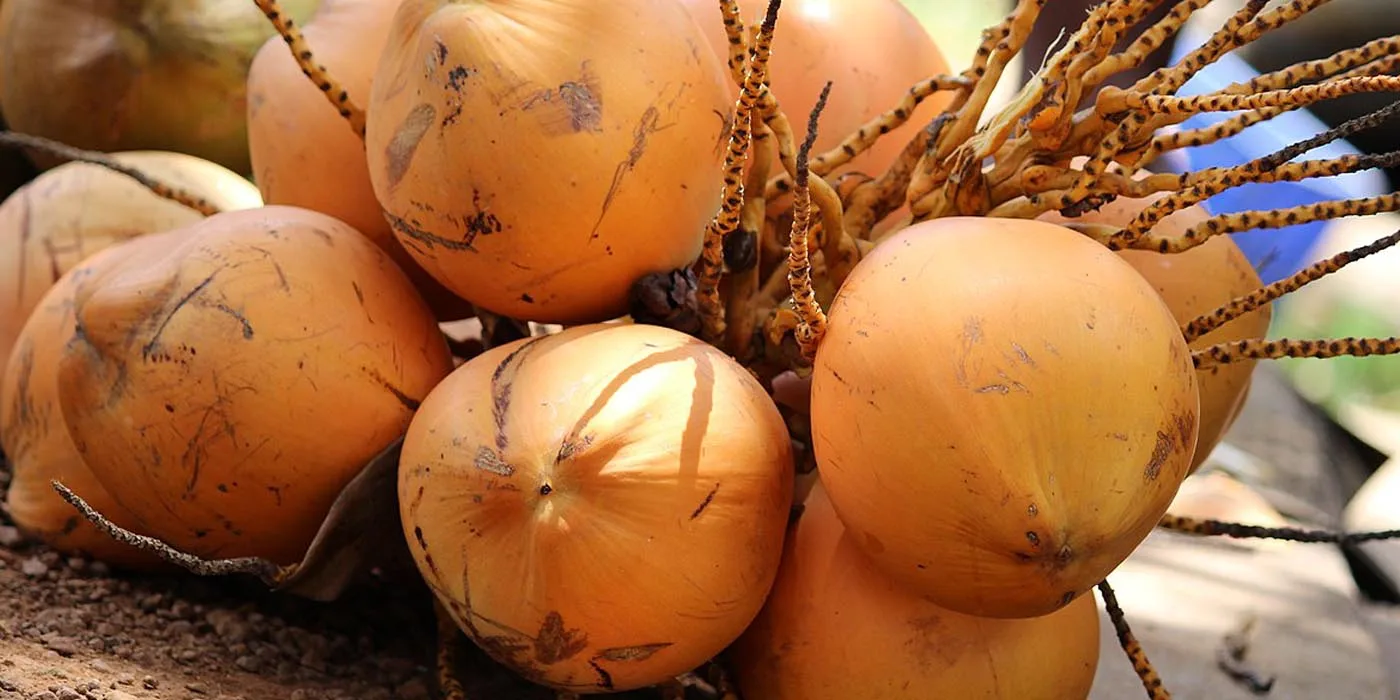
Sri Lankan cuisine is a mix of many different flavors, and the most popular dish is rice and curry. This dish is like a small party in your mouth, with many different tastes from the rich coconut milk to the hot and spicy chili peppers.
There are many other unique and delicious Sri Lankan dishes to explore, such as hoppers, string hoppers, kottu rotty, lamprais, and pittu. And of course, since Sri Lanka is an island, there are many delicious seafood options to choose from.
Sri Lankan cuisine is known for being spicy, and it can be just as spicy as Thai food. Some chefs may add a lot of chili powder to their food, but if you are a tourist, you may want to ask for milder food. The locals will often ask you how spicy you want your food, and “medium” is usually a good option if you want something flavorful but not too hot.
If you find that your food is too spicy, do not drink water. This will only make the burning sensation worse. Instead, try eating some plain rice, bread, or even drinking a beer. This will help to cool down your mouth and bring back the flavor of your food.
Overall, Sri Lankan cuisine is a delicious and unique culinary experience. While the heat can be intense, it is possible to find dishes that are more to your liking.
Eating Etiquette in Sri Lankan Cuisine
In Sri Lanka, it is customary to eat with your fingers when enjoying Sri Lankan cuisine. However, if you prefer to use cutlery, that is fine. Just be sure to use your right hand. The left hand is considered unclean in Sri Lanka.
Cost of Meals in Sri Lankan Cuisine
Meals in Sri Lanka are generally affordable. You can get a satisfying rice and curry meal at a local cafe for a few dollars. Main courses at most guesthouses cost around $10. Even at more upscale restaurants, you can find main courses starting from $15.
Spelling Variations in Sri Lankan Cuisine
Some popular Sri Lankan dishes have different spellings. For example, idlis might be listed as ittlys, vadais could be labeled as wadais, kottu rotty may transform into kotturoti, and lamprais could be referred to as lumprice. You may also come across unintentionally amusing menu items such as “cattle fish,” “sweat and sour,” or the peculiar claim of Adolf Hitler’s favorite dish, “nazi goreng.”
Where to Find Good Food in Sri Lanka

Sri Lankan cuisine is delicious, but it can be hard to find good restaurants that showcase the island’s culinary delights. Most locals eat at home or at small cafes, which often serve simple but satisfying Sri Lankan meals. Tourists who want to try something more special may have to go to Colombo or other major cities.
If you’re staying at a hotel or guesthouse, the restaurant there may be a good option. But be aware that the quality and selection of Sri Lankan food can vary widely.
A better bet is to look for lunch packets. These are available at local cafes and street stalls from around 11am to 2pm. They usually consist of rice, curry, and vegetables, and they’re a great way to try Sri Lankan cuisine at an affordable price.
If you want to try something really special, you can also look for independent restaurants that cater to tourists. These restaurants often offer a fusion of Sri Lankan, seafood, and Western cuisines.
Sri Lankan Rice and Curry
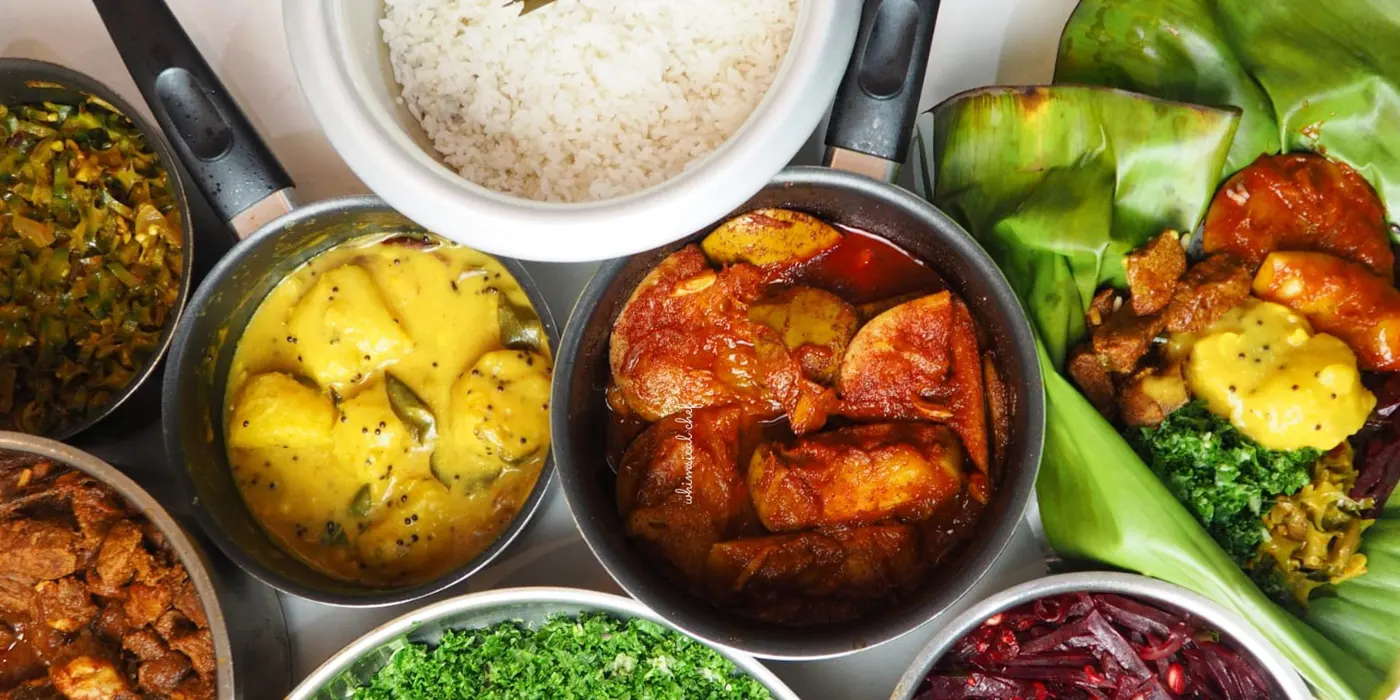
Sri Lankan cuisine is known for its rice and curry, a dish that is enjoyed by people of all ages and served in almost every restaurant and cafe in the country. A truly exceptional Sri Lankan rice and curry experience can leave a lasting impression. However, it is important to note that this dish is not similar to the classic curries of North India.
Sri Lankan curry sauces, known as “kiri hodhi” or “milk gravy,” are made with coconut milk infused with fiery chilies and a variety of aromatic spices. They are more similar to the vibrant green or red curries found in Thai cuisine than anything you would find in India.
The basic version of Sri Lankan rice and curry, served in local cafes throughout the island, consists of a plate of rice topped with a few spoonfuls of vegetable curry, a portion of chicken or fish, and a dollop of sambol. More elaborate versions feature the rice as the star of a mini feast, accompanied by as many as 15 side dishes.
This lavish spread, reminiscent of the Indonesian nasi padang and the Dutch-influenced rijsttafel, was introduced to Sri Lanka in the 18th century. The grand array often includes meat or fish curry alongside delectable accompaniments such as curried pineapple, potato, eggplant, sweet potato, okra, and lentils.
You may also encounter lesser-known local vegetables, including curried jackfruit and drumsticks, which have a texture similar to okra. Ash plantain, snake gourd, bitter gourd, and breadfruit are among the other exotic and tongue-twisting regional produce that may grace your plate. Another common side dish is mallung, which features shredded green vegetables lightly stir-fried with spices and grated coconut.
Accompanying the Sri Lankan rice and curry is sambol, which is designed to add an extra kick to your meal. Sambols come in various forms, with the most common being pol sambol (commonly known as “coconut sambol“). This often eye-watering creation combines chili powder, chopped onions, salt, grated coconut, and Maldive fish. Approach it with caution!
You may also encounter the slightly milder lunu miris, made with chili powder, onions, Maldive fish, and salt, as well as the delightful sweet-and-sour seeni sambol (commonly known as “sugar sambol”).
Interestingly, the rice itself is often unassuming, lacking the delicate spicing found in North Indian pilafs and biryanis. Sri Lanka cultivates a variety of rice, but the one served in restaurants tends to be of lower quality. However, on occasion, you may come across the nutritious and distinctively flavored red and yellow rice, which are similar to brown rice in terms of taste and texture, grown in certain regions of the island.
Other Sri Lankan Delicacies
One of the most iconic Sri Lankan foods is the hopper, a pancake-like dish made from a batter of rice flour and coconut milk. Hoppers are traditionally cooked in a wok-like pan and can be enjoyed plain or with a variety of toppings, such as an egg, curry, or yogurt.
Another popular Sri Lankan dish is string hoppers, which are made from rice flour and water and are steamed into delicate nests. String hoppers are often served with a curry or lentil soup.
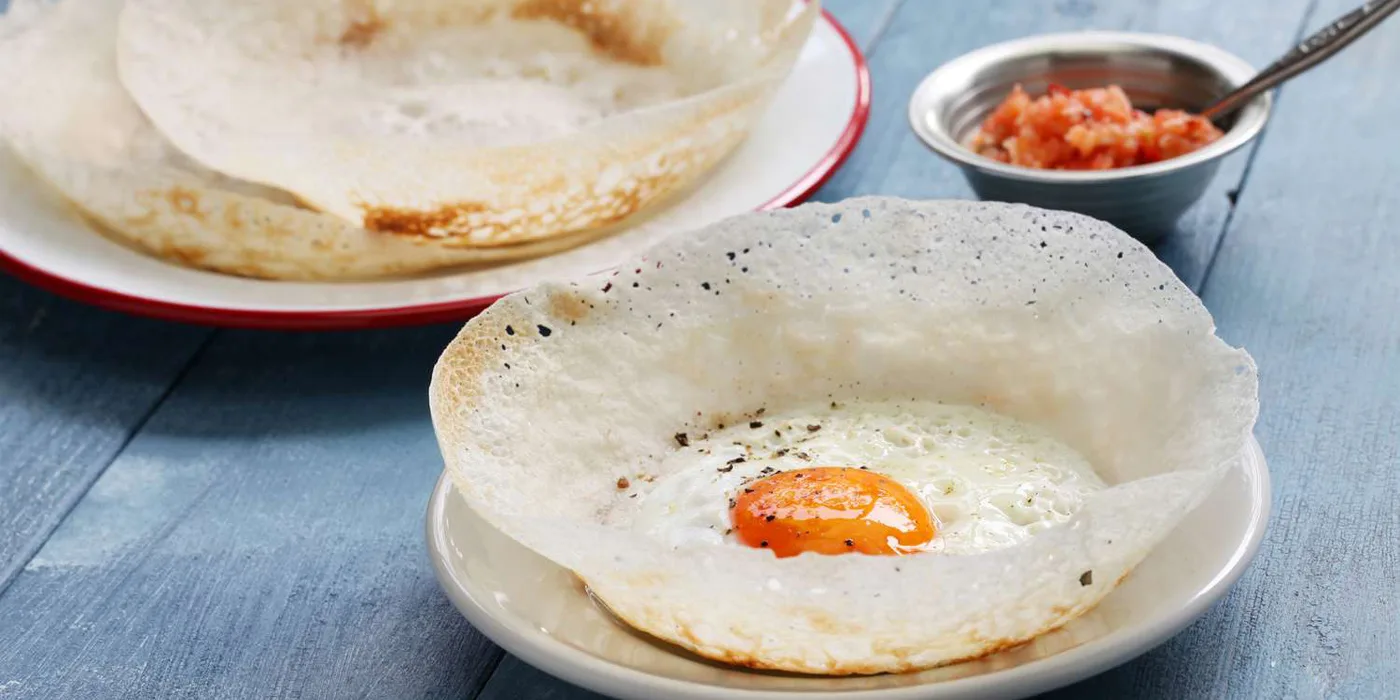
Pittu is another popular rice dish in Sri Lanka. It is made from a mixture of rice flour and grated coconut that is steamed in a cylindrical bamboo mold. Pittu is often served with a curry or chutney.
Lamprais is a unique Sri Lankan dish that is made with rice, chicken, vegetables, and egg, all baked together in a plantain leaf.
For those who enjoy roti, Muslim restaurants are the place to go. Roti is a thin, doughy pancake that is made with wheat flour. It can be enjoyed plain or with a variety of fillings, such as curried meat, vegetables, or potatoes. Kottu roti is a stir-fried dish made with roti, meat, and vegetables. It is a popular street food in Sri Lanka.
Devilled dishes are also popular in Sri Lanka. They are made with a thick, spicy sauce and generous chunks of onion and chili. Devilled chicken, pork, fish, and beef are all popular options. Another popular Sri Lankan dish is buriani, which is a rice dish made with chicken, curry sauce, and a boiled egg. It is a satisfying lunchtime option.
Short Eats in Sri Lankan Local Foods
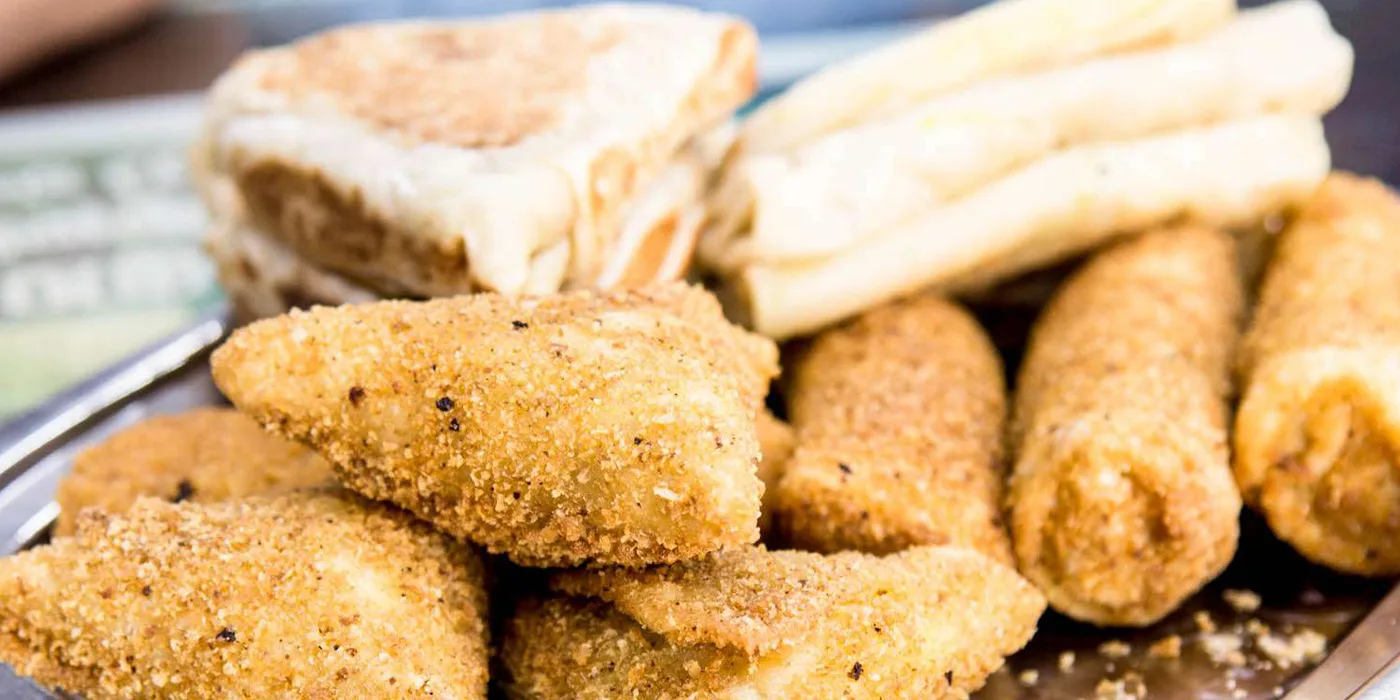
A popular Tamil savory snack that is now widely enjoyed in Sri Lanka is the vadai, a spicy doughnut made from deep-fried lentils. The sound of hawkers calling out “Vadai-vadai-vadai!” is a common occurrence on train and bus journeys. In cafes, vadais are often served on plates with rotis and bread rolls, under the category of “short eats”.
Other Cuisines in Sri Lanka
Chinese restaurants can be found throughout the island, although many of them are essentially local watering holes that serve fried rice and noodles. However, authentic Chinese establishments are often excellent, even though the predominantly Cantonese-style dishes are usually adjusted to suit Sri Lankan cuisine. As expected, Colombo offers the best selection of Chinese restaurants.
Tourist restaurants occasionally feature Indonesian dishes that were introduced during the Dutch colonial period. The most common examples are nasi goreng (fried rice with meat or seafood, topped with a fried egg) and gado gado (a salad with cold boiled eggs in a peanut sauce). However, these renditions often deviate from the original Indonesian flavors, which are quite different from Sri Lankan cuisine.
Other cuisines are primarily concentrated in Colombo. Thai food has gained some popularity, albeit on a limited scale, while Japanese cuisine has a modest following as well. In Colombo, you’ll also find a small but noteworthy number of decent North Indian restaurants, along with a few excellent European establishments. Upscale hotels across the island make attempts at serving European cuisine, but the quality and execution can vary significantly, depending on the restaurant.
Seafood in Sri Lankan Cuisine

Unsurprisingly, seafood holds a prominent position in the Sri Lankan culinary repertoire, often taking the spotlight over meat. Common fish varieties include tuna, seer (a firm white fish), mullet, and the delectably tender butterfish. Other options include pomfret, bonito, shark, lobster, abundant crab, prawns, and cuttlefish (calamari). The Negombo lagoon, located just north of Colombo, is particularly renowned for its seafood, including enormous jumbo prawns that rival the size of well-fed crabs.
If you prefer milder flavors, seafood is usually a safe choice in Sri Lankan cuisine. Fish is typically prepared in a simple manner, often fried (sometimes coated in breadcrumbs) or grilled, served with a squeeze of lemon or accompanied by a mild garlic sauce. However, you will also find spicy fish curries, and dishes featuring chili-infused seafood are quite common, with chili crab being a popular favorite.
Vegetarian Food in Sri Lankan Cuisine
Surprisingly, despite being a predominantly Buddhist country, the concept of vegetarian food hasn’t gained much traction in Sri Lanka. Nevertheless, a significant portion of the country’s cuisine is meat-free, featuring vegetable curries, vegetable rotis, hoppers, string hoppers, and an array of tantalizing fruits. Colombo boasts numerous delightful pure vegetarian South Indian restaurants, while those who consume fish and seafood will have no trouble finding satisfying meals, particularly in coastal areas.
Desserts and Sweets in Sri Lankan Cuisine

A classic Sri Lankan dessert is curd, a yogurt made from buffalo milk, typically served with honey or kitul, a sweet syrup derived from the kitul palm. When boiled and allowed to harden, kitul transforms into jaggery, a versatile sweetener widely used in Sri Lankan cuisine.
Another notable dessert is wattalappam, an egg pudding with Malay origins that bears a resemblance to crème caramel but boasts a sweeter and less slippery texture.
Kiribath, a dish of rice cakes cooked in milk and served with jaggery, holds cultural significance as it is often prepared for weddings and served as a baby’s first solid food.
If you come across faluda, a South Indian dessert, expect a vibrant concoction of milk, sugar syrup, jelly and ice cream. Ice cream, typically factory-made, is widely available and safe to consume in Sri Lankan cuisine, with Elephant House, Highland and Kotmale being the most popular brand.
Additionally, you’ll encounter a diverse selection of cakes, often featuring fluorescent colors and curiously fused with curry flavors.
Fruits in Sri Lankan Cuisine
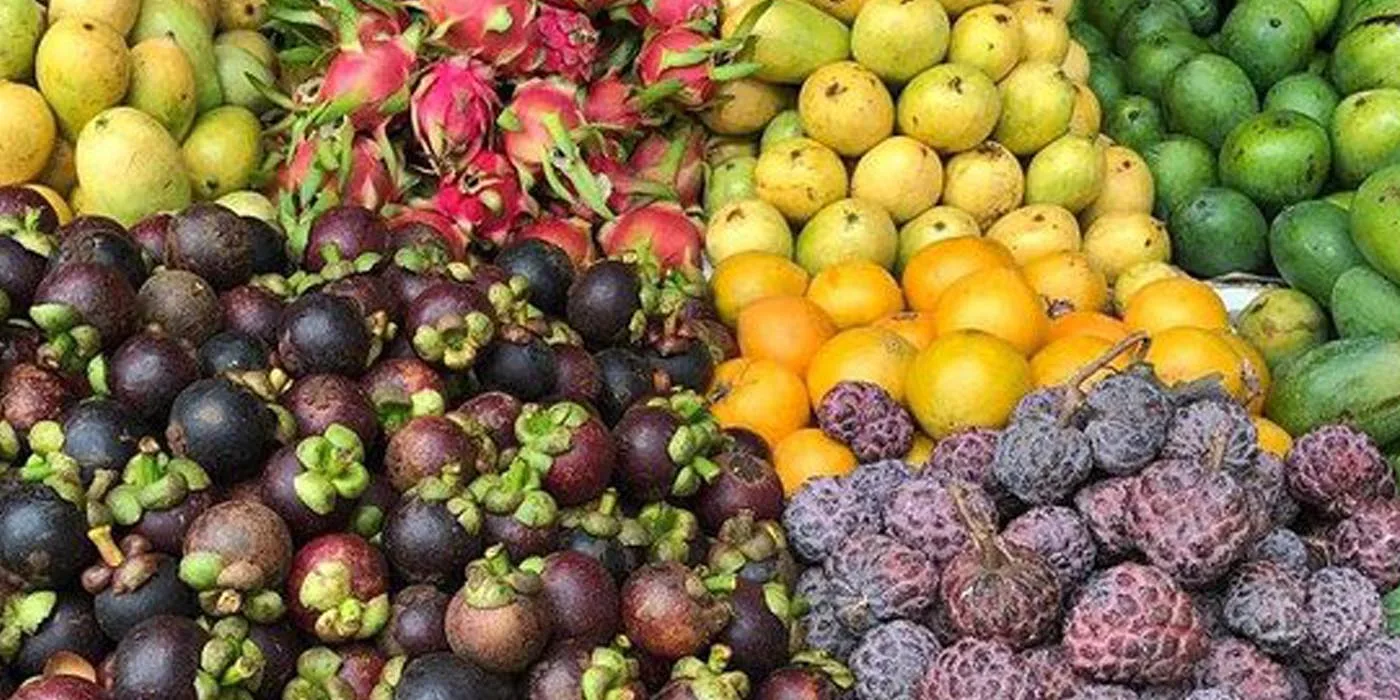
Sri Lanka boasts an astonishing variety of fruits, ranging from the familiar to the more exotic, including Southeast Asian favorites introduced by the Dutch from Indonesia. The seasonal availability of each fruit is indicated by the months in parentheses below (for fruits available year-round, no months are specified).
Well-known fruits in Sri Lankan cuisine include pineapple, mangoes (April-June & Nov-Dec), avocados (April-June), coconuts, and a wide variety of bananas, ranging from small, sweet, yellow varieties to colossal red giants.
Papaya, a uniquely sweet and juicy fruit, is often used in fruit salads in Sri Lankan cuisine.
However, the crowned jewel of Sri Lankan fruits is undeniably the jakfruit (April-June & Sept-Oct), the largest fruit in the world. This colossal, elongated dark-green monster, resembling a gigantic marrow in shape, has fibrous flesh that can be consumed either raw or cooked in curries in Sri Lankan cuisine.
Durian (July-Sept) is another mammoth specimen—an imposing green fruit covered in spiky outer skin. It has an acquired taste, as its flesh emits an odor reminiscent of clogged drains. Despite its pungency, durian is widely regarded as a delicacy in Sri Lankan cuisine, with some believing it possesses aphrodisiac properties.
The most peculiar-looking fruit, however, is the rambutan (July-Sept), a delightful lychee-like fruit enveloped in a vibrant red skin adorned with tendrils.
Another treasured Sri Lankan delicacy in Sri Lankan cuisine is the mangosteen (July-Sept), resembling a purple tomato with a firm shell-like skin that softens as the fruit ripens. The delicate and delicious flesh resembles a grape with a subtle citrus tang.
Equally unique is the wood apple, a round fruit about the size of an apple, covered in a resilient grayish bark. Inside, there is a red pulpy flesh that has a bitter taste and numerous seeds. It is sometimes served with a drizzle of honey in Sri Lankan cuisine.
Custard apples are also found in Sri Lanka, characterized by their greenish color, apple-sized appearance, knobby exterior (resembling artichokes), and smooth, sweet white flesh surrounding a central core of seeds.
Other tropical fruits that may cross your path in Sri Lankan cuisine include java apple (commonly known as “rose apple”), lovi-lovi, soursop, sapodilla, and beli fruit (distinct from nelli fruit, a type of Sri Lankan gooseberry).
Lastly, keep an eye out for the tiny gulsambilla (Aug-Oct), Sri Lanka’s most peculiar fruit, resembling a large, furry green seed enclosing a tiny kernel with a tart flavor.
Water in Sri Lanka
It is advisable to avoid tap water in Sri Lanka. Bottled water is readily available throughout the country, sourced from various locations in the hill country and sold under a variety of brand names. Make sure the seal has not been tampered with, although it is worth noting that the bottles themselves are often not pristine.
Soft Drinks in Sri Lanka
Popular international soft drink brands like Pepsi, Coca-Cola, and Sprite are widely accessible and inexpensive. However, it is much more enjoyable (and beneficial for the Sri Lankan economy) to delve into the delightful assortment of local soft drinks produced by Olé, Lion, and Elephant.
These include nostalgic favorites such as cream soda and ginger beer, as well as unique local brands like Portello (reminiscent of Vimto) and the intensely sweet, lollipop-flavored Necta. Ginger beer, in particular, is quite prevalent and incredibly refreshing. Elephant brand ginger beer uses natural ginger, believed to be beneficial for the stomach and digestion.
Coconut water, with its slightly sour taste (known as thambili), may not be to everyone’s liking, but it is a safe choice as it is protected within the heart of the coconut. It is often touted as an excellent remedy for hangovers due to its combination of glucose and potassium, which also makes it a suitable beverage when dealing with diarrhea.
Tea and Coffee in Sri Lanka
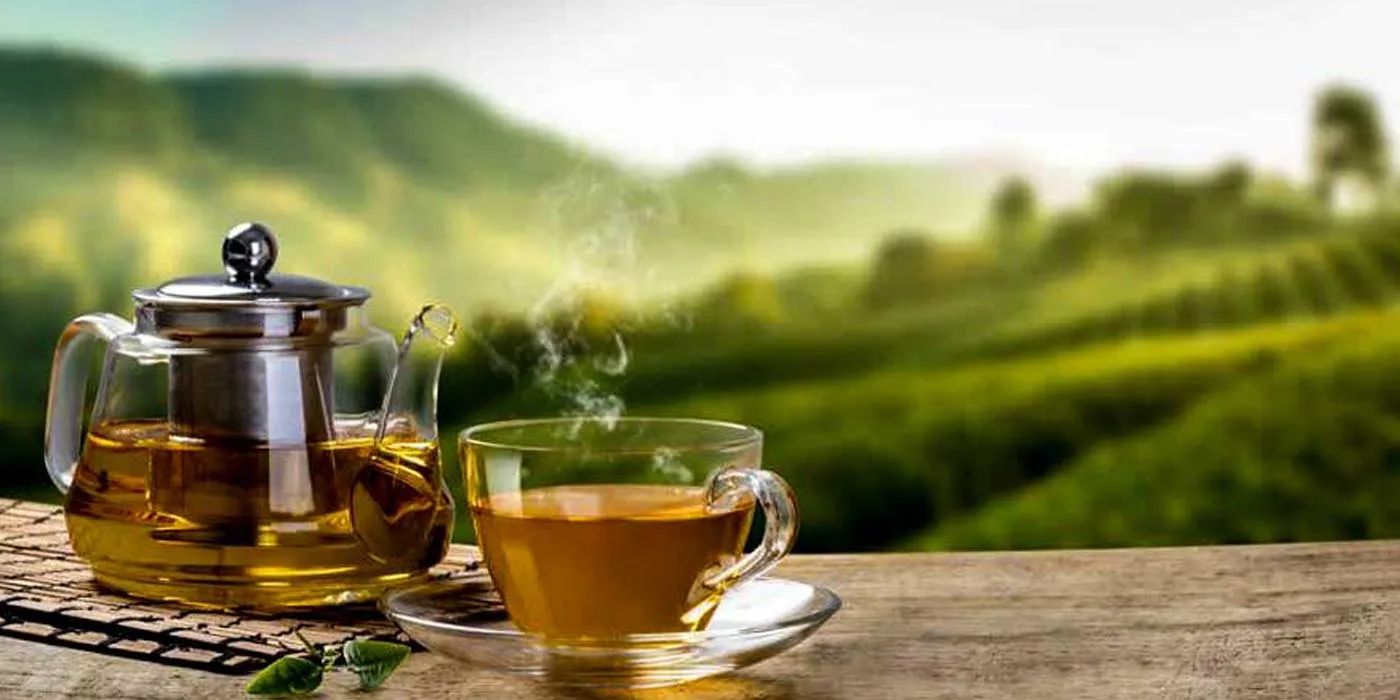
Despite the renowned reputation of Sri Lanka’s tea, most varieties served tend to be relatively mild, lacking the distinctive flavors found in India’s marvelous masala teas.
Regular tea is commonly referred to as “milk tea” in Sri Lankan cuisine (if you prefer to add your own milk and sugar, request “milk and sugar separate” to avoid an excessively sweet concoction). “Bed tea” simply denotes ordinary tea served in your room for breakfast.
Coffee sometimes proves to be a better option in Sri Lankan cuisine. It is typically either Nescafé or locally produced coffee, with the latter being usually unremarkable yet perfectly enjoyable. However, it is worth noting that sediment may accumulate at the cup’s bottom when consuming locally brewed coffee. Increasingly, machine-made coffee is becoming more readily available in Sri Lankan cuisine.
Alcoholic Beverages in Sri Lanka
Sri Lanka boasts a vibrant drinking culture, with the introduction of beer by foreign captives during the Kandyan period leaving a lasting impact. The country’s two primary forms of alcohol are lager and arrack in Sri Lankan cuisine. Lager is typically sold in large bottles (625ml), while draught lager is less common.
The selection of brands is not extensive, with all of them containing an alcohol content of just under five percent. The popular national choice, Lion Lager, is unremarkable but enjoyable in Sri Lankan cuisine. Other more pleasing beer options include Carlsberg (brewed under license in Sri Lanka), the delicately malty Three Coins, and Three Coins Riva, a satisfying wheat beer.
Anchor beer is also gaining popularity, offering a soft, creamy, albeit slightly bland taste in Sri Lankan cuisine. Lion also produces a rich and dense stout called Lion Stout, which is practically a meal in itself. Lion Strong (eight percent a.b.v.) is a favorite among local alcohol enthusiasts in Sri Lankan cuisine.
Lager is relatively expensive in Sri Lanka, with the cheapest options available in liquor shops and slightly pricier in most bars and restaurants. Imported beers, when available, come with a substantial markup.
Two distinctively local alcoholic beverages derive from the versatile coconut in Sri Lankan cuisine. Toddy, extracted from the coconut flower, is non-alcoholic when fresh but ferments into a cider-like beverage. It is informally sold in villages throughout the country, though tracking it down without a Sinhala-speaking companion can be challenging.
When fermented and distilled, toddy transforms into arrack (33% proof), Sri Lanka’s renowned beverage for the spirited in Sri Lankan cuisine. It is consumed neat, mixed with coke or lemonade, or used as a base for cocktails in tourist-oriented bars and restaurants.
Arrack is available in various grades and is typically dark brown, although clear brands like White Diamond and White Label can also be found. The smoother, double-distilled arrack possesses a hint of rum flavor. Imported spirits are widely accessible but come at a predictable premium in Sri Lankan cuisine.
Sri Lanka also produces local versions of most spirits, including somewhat rough whisky, brandy, rum, and vodka, as well as several palatable brands of lemon gin.
Where to Drink in Sri Lanka
Most people enjoy their drinks in hotel bars or guesthouses. Colombo, Kandy, and a few tourist resorts have a handful of decent bars and English-style pubs. Local bars tend to be dimly lit and seedy, and are mostly frequented by men.
Supermarkets in larger towns sell alcohol. Smaller areas typically have a few modest-looking liquor shops, which are small kiosks piled high with bottles of beer and arrack, and protected by sturdy security bars.
Technically, it is prohibited to purchase alcohol on full-moon (poya) days. However, tourist hotels and bars often discreetly cater to visitors.
Related reading:
FAQs About Sri Lankan Cuisine
What is Sri Lankan cuisine known for?
Sri Lankan cuisine is known for its diverse and flavorful dishes, which are characterized by a combination of aromatic spices, coconut, rice, and a variety of vegetables and proteins.
What are some popular Sri Lankan dishes?
Some popular Sri Lankan dishes include: Curry (such as chicken, fish, or vegetable curry), Rice and curry, Hoppers, String hoppers, Kottu roti, Various seafood preparations.
What is the significance of rice in Sri Lankan cuisine?
Rice is a staple food in Sri Lankan cuisine and is typically served with almost every meal. It is often accompanied by a variety of curries and other side dishes.
What are hoppers, and how are they made?
Hoppers are unique Sri Lankan dishes made from fermented rice batter. They are crispy around the edges and soft in the center, forming a bowl shape. They are typically served with eggs, curries, or sambols.
What is the key ingredient in many Sri Lankan dishes?
Coconut is a key ingredient in many Sri Lankan dishes. Coconut milk, grated coconut, and coconut oil are commonly used in curries, sambols, and desserts.
How spicy is Sri Lankan food?
Sri Lankan food can be quite spicy, as it often includes a blend of spices such as chili, black pepper, and cinnamon. However, the level of spiciness can be adjusted to suit individual preferences.
What are “kottu roti” and how are they prepared?
Kottu roti is a popular street food in Sri Lanka made from chopped roti (flatbread), vegetables, eggs, and a choice of meat or seafood. It’s cooked on a griddle with a blend of spices.
Are there vegetarian and vegan options in Sri Lankan cuisine?
Yes, Sri Lankan cuisine offers a wide range of vegetarian and vegan options. Dishes like vegetable curries, dhal (lentil curry), and coconut sambols are commonly enjoyed by those with dietary restrictions.
What are some traditional Sri Lankan desserts?
Traditional Sri Lankan desserts include sweets like Kokis (crispy rice flour cookies), Kavum (deep-fried oil cakes), Wattalappam (a creamy coconut custard).
Is Sri Lankan cuisine influenced by other cultures?
Yes, Sri Lankan cuisine has been influenced by Indian, Dutch, Portuguese, and British culinary traditions due to historical interactions and trade. This has resulted in a unique fusion of flavors and ingredients.
Can I find Sri Lankan restaurants outside of Sri Lanka?
Yes, Sri Lankan restaurants can be found in many major cities around the world, making it possible to enjoy authentic Sri Lankan dishes even if you’re not in Sri Lanka.
Are there any regional variations in Sri Lankan cuisine?
Yes, Sri Lankan cuisine can vary by region. For example, coastal areas are known for their seafood dishes, while the central regions focus more on vegetable-based curries.
Is it common to eat with your hands in Sri Lankan cuisine?
Yes, eating with your hands is a common practice in Sri Lankan cuisine, especially when consuming rice and curry dishes. It is believed to enhance the flavors of the food.
What are some must-try Sri Lankan food experiences for tourists?
Rice and curry, Hoppers with sambols, Seafood dishes, Street food like kottu roti and isso wade (shrimp fritters).
Is Sri Lankan cuisine suitable for people with dietary restrictions or allergies?
Sri Lankan cuisine can be adapted to accommodate dietary restrictions. Many dishes are naturally gluten-free, and there are plenty of vegetarian and vegan options available. However, it’s advisable to communicate any allergies or dietary needs when ordering.
